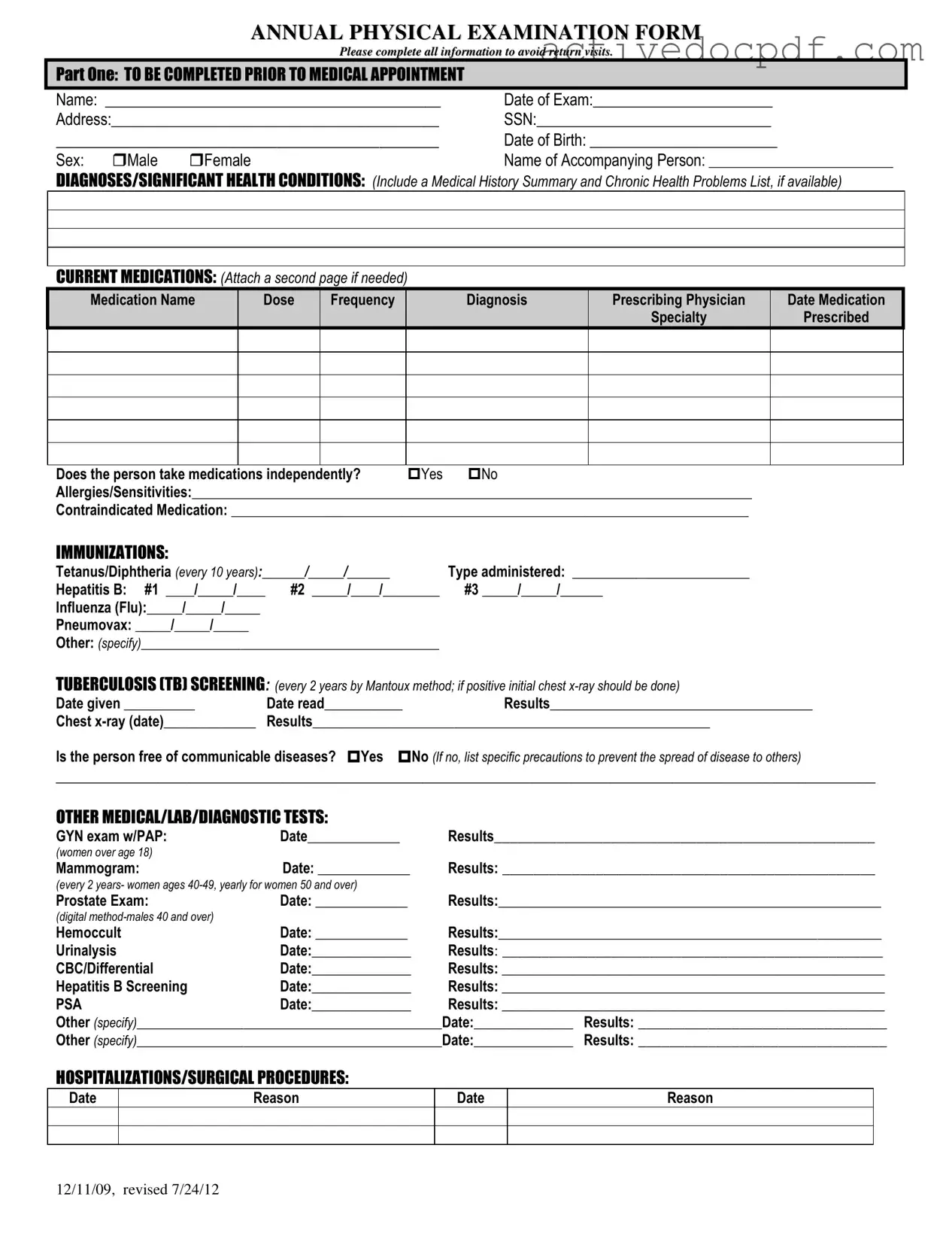The Annual Physical Examination form serves as a comprehensive tool for gathering essential health information prior to a medical appointment. By collecting details about medical history, current medications, immunizations, and any significant health conditions, the form helps healthcare providers assess an individual's overall health and tailor their care accordingly. Completing this form accurately can lead to more effective and efficient medical evaluations.
Part One of the form requires personal information such as the individual's name, date of birth, and address. Additionally, it asks for the Social Security Number and details about any accompanying person. Medical history is crucial here; individuals must list diagnoses, chronic health problems, current medications, allergies, and any contraindicated medications. Immunization records and tuberculosis screening information are also included to ensure comprehensive health assessment.
Preparation for filling out the form involves gathering relevant health documents and records. Individuals should review their medical history, including past diagnoses, surgeries, and hospitalizations. It is also advisable to compile a list of current medications, including dosages and prescribing physicians. If available, immunization records should be collected to provide accurate dates and types of vaccines received. This preparation will help ensure that all necessary information is included, minimizing the need for follow-up visits.
What if I have allergies or sensitivities?
If an individual has allergies or sensitivities, it is vital to document them clearly on the form. This information helps healthcare providers avoid prescribing medications or treatments that could trigger an allergic reaction. Including specific details about the nature of the allergies, such as severity and past reactions, can enhance patient safety and inform future medical decisions.
What tests are included in the Annual Physical Examination?
The Annual Physical Examination may include a variety of tests, depending on age, gender, and individual health needs. Common tests include blood pressure measurements, urinalysis, and screenings for various conditions like prostate health for men and mammograms for women. Additional tests may be recommended based on medical history or findings during the examination. It is essential for individuals to discuss any specific concerns with their healthcare provider during the appointment.
What happens if I have a change in health status from the previous year?
If there has been a change in health status, it is crucial to indicate this on the form. This information can guide the healthcare provider in adjusting care plans, recommending further tests, or making referrals to specialists. It is important to provide specific details about the changes, as they can significantly impact overall health and treatment strategies.
The information collected through the Annual Physical Examination form is used solely for the purpose of providing medical care and improving health outcomes. Healthcare providers are bound by confidentiality laws, ensuring that personal health information is protected. Individuals should feel secure knowing that their data will be handled with the utmost care and only shared with authorized personnel involved in their treatment.
